After flickering continuously for 50 years beneath the arches of the India Gate, the Amar Jawan Jyoti was on Friday merged with the eternal flame at the National War Memorial, while an imposing statue of Netaji Subhas Chandra Bose is set to occupy its famed canopy in the historic complex that turned a page days ahead of Republic Day.
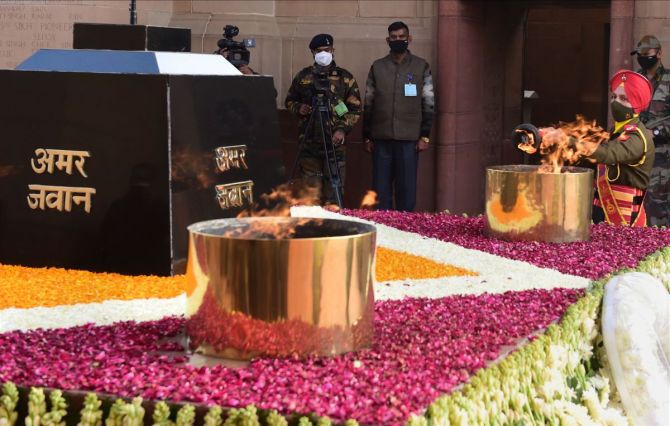
A section of historians, however, lamented the 'sudden transition' of 'this sacred landscape', and said, any change in this heritage precinct should have been done only after 'due deliberations and proper public consultations'.
The Amar Jawan Jyoti was built after India's victory against Pakistan in the 1971 war, as a memorial for Indian soldiers who made the supreme sacrifice, and was inaugurated by the then prime minister Indira Gandhi on January 26, 1972.
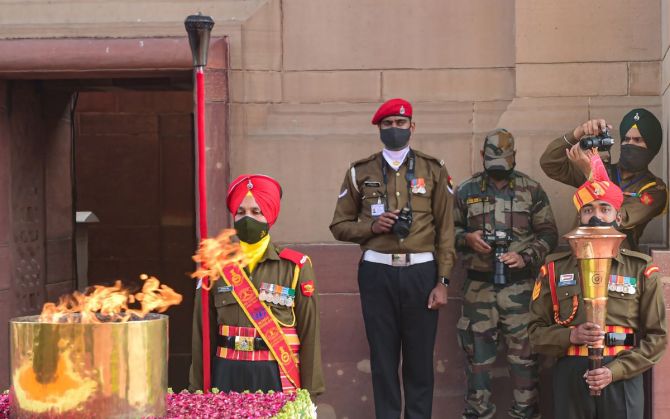
In these five decades, the flame and the inverted bayonet and a soldier's helmet have become as much part of the Indian psyche as the India Gate itself, which has been celebrated in books, films and photographs since its opening 90 years ago.
Designed by Sir Edwin Landseer Lutyens, India Gate, a prominent tourist attraction today, is a solemn memorial to the soldiers from India who died in action, and originally called the All-India War Memorial Arch.
The monumental sandstone arch, often compared to the Arc de Triomphe in Paris, was opened a decade after its foundation was laid by the Duke of Connaught over a century ago on February 10, 1921, according to archival records.
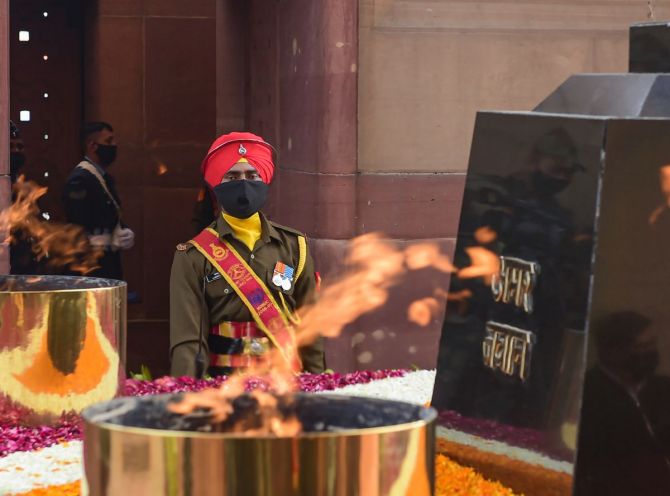
The 42 m-high All India War Memorial Arch was built to honour the soldiers who died in the First World War (1914-1918) and the Third Anglo-Afghan War (1919). The landmark has the names of soldiers inscribed on its surface.
Over 80,000 Indian laid their lives in those campaigns and India Gate bears names of 13,516 etched over its surface.
The merging of the Amar Jawan Jyoti with the eternal flame of the NWM, located 400 m away from the memorial arch in the India Gate complex, and the move to install a statue of freedom fighter Netaji Subhas Chandra Bose, will 'drastically alter the very landscape and the enduring imagery' of this old, open complex that sits radially opposite the Raisina Hill complex on Rajpath, experts said.
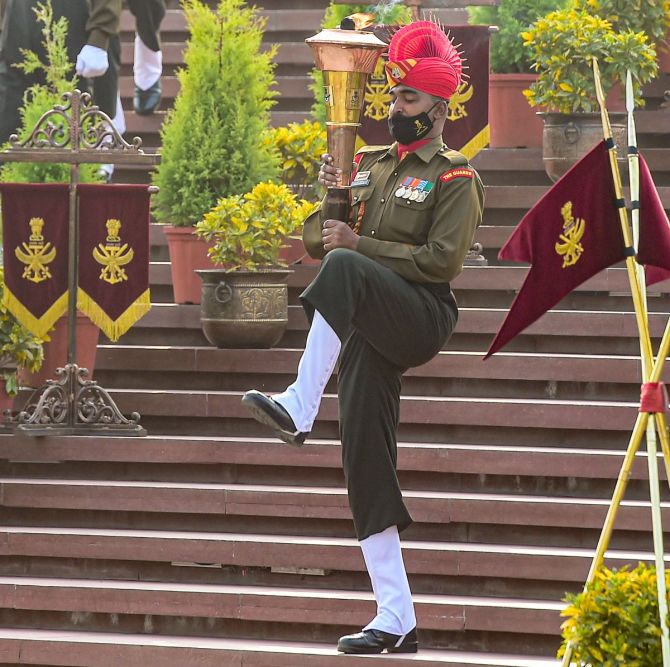
Many historians and heritage experts lamented this 'drastic change' and recalled the days when nearly three decades ago, a similar move was made to install a statue of Mahatma Gandhi in the famed canopy, which originally housed a grand marble statue of King George V, during whose reign the capital of the British Raj was shifted to Delhi from Calcutta.
Historian and author of 'Connaught Place and the Making of New Delhi' Swapna Liddle said she was saddened to think of the altering of the landscape of India Gate complex, built during the construction of the capital of 'New Delhi'.
"Our generation and other generations have always looked at India Gate and Amar Jawan Jyoti inseparably. Also, it has been seen by people, metaphorically as a memorial to the unknown soldier, and not just to only those who died in the 1971 war. This is too sudden, so much memories have now suddenly got frozen," she said.
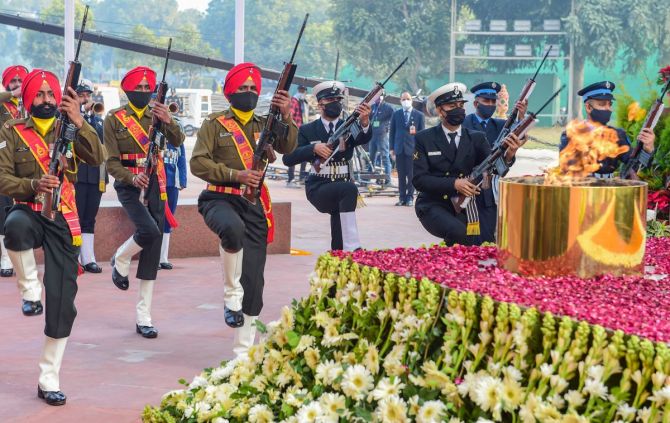
Liddle, who conducts heritage walks in the city, underlined that a project of such dramatic a scale, should have been done only after 'proper consultations with the public, including experts and not suddenly announced'.
After all, India Gate is a public space and it belongs to the people, so they should have a say in it, if something is being changed, she said.
Liddle recalled the time in the late 80s when there was a proposal to install a statue of Mahatma Gandhi in the vacated canopy, after the statue of King George V was removed in 1968 and later dumped at Coronation Park in northwest Delhi, the very site where in a royal durbar in 1911, the British monarch had announced the shifting of the capital to Delhi.
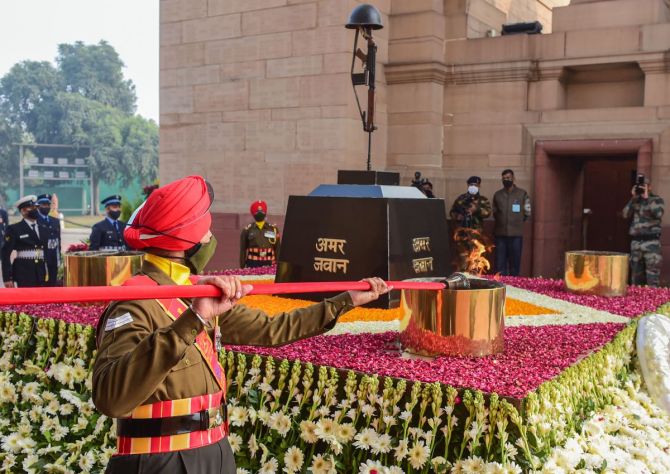
"Statues inspire curiousity, and with time can assume a controversial nature. And, while removal of George V's statue was done in a nationalistic wave seen post Independence, I feel the canopy should have been left unoccupied. No, one person only belongs there, there are too many heroes who made our free India. It's not appropriate to install any single leader's statue," she said.
Another noted historian and author, who did not wish to be named, lamented the government's move to 'drastically and suddenly' change the image of the landscape of the India Gate.
"I feel a sense of despair. There should have been proper consultations and due deliberations before taking such a decision," the historian rued, and also recalled how in late 80s, the proposal to install a statue of Gandhi became so controversial, and some even had suggested 'dismantling the canopy' until good senses prevailed.
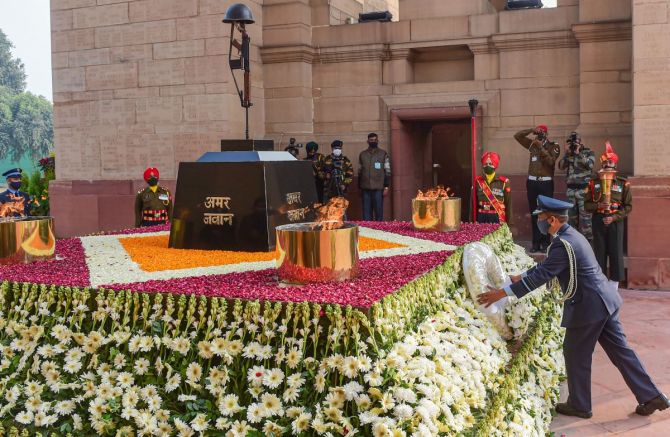
Ahead of Netaji's 125th birth anniversary, Prime Minister Narendra Modi announced on Friday that a grand statue of the iconic freedom fighter will be installed at India Gate as a symbol of India's 'indebtedness' to him.
Till the statue, made of granite, is completed, a hologram statue of his would be present at the same place, he said, adding that he will unveil the hologram statue on January 23, the birth anniversary of the Azad Hind Fauj founder.
Official sources said the dimension of the granite statue will be 28 feet long and six feet wide and added that its installation will be a case of India 'reclaiming' its history.
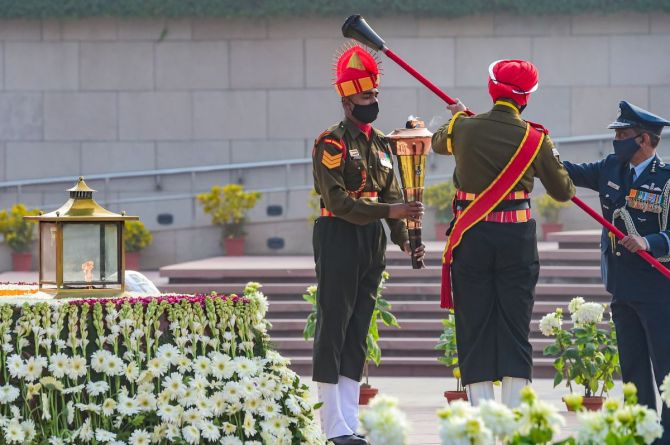
The move to merge the Amar Jawan Jyoti has triggered a controversy, also drawing sharp reaction from Congress, mixed response from former military officers and ex-servicemen, while many citizens took to social media to express their feelings about the flickering flame beneath the India Gate, which has been part of national consciousness for half a century.
The government sources, however, said it was an odd thing to see that the flame at Amar Jawan Jyoti paid homage to the martyrs of the 1971 and other wars but none of their names are present there at the India Gate.
The names inscribed on the India Gate are of only some martyrs who fought for the British in the World War-I and the Anglo Afghan War and thus is a symbol of the country's colonial past, the government sources said.
They said the names of all Indian martyrs from all the wars are housed at the National War Memorial. Hence, it is a true homage to have the flame paying tribute to martyrs there, they added.











 © 2025
© 2025